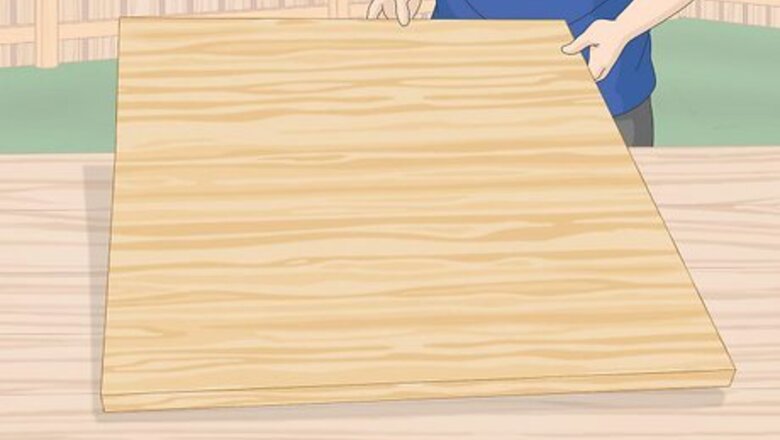
views
Priming the Wood
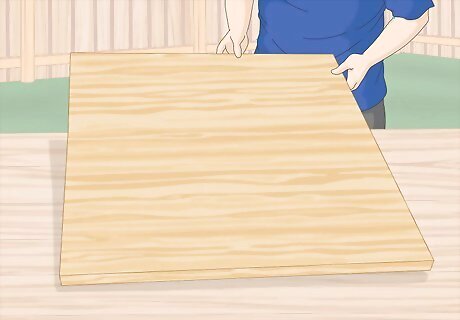
Buy a square of smooth, pressure-treated plywood. Since you will be painting on your plywood, you want it to have a smooth texture. Signboard is a great option, but if you can’t get it, sanded plywood or medium-density fiberboard will also work. A common size is 4 by 4 feet (120 by 120 cm), but you can make your barn quilt whatever size you want. A smaller one is an easy way to start. A lumberyard or a home supply store are good places to look for plywood.
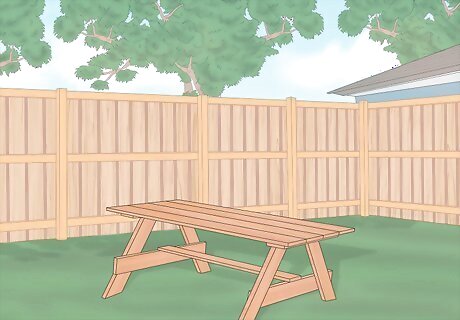
Work in a well-ventilated spot and protect the floor with drop cloths. Do your priming and painting outside or in an open garage. Lay down drop clothes to protect the floor if you are painting on the ground. You can also put your plywood on top of sawhorses or on a work table. If you don’t have ventilation when you paint, the paint fumes can be really harmful.
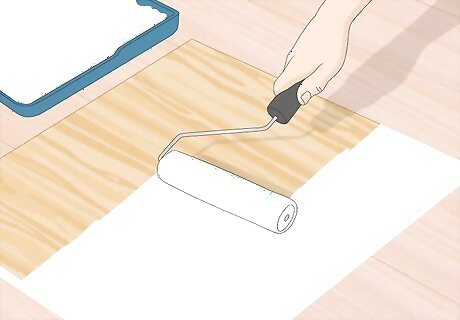
Apply exterior latex primer to the plywood with a roller. Pour primer into a rolling tray, and dip your paint roller into it. Rub the paint roller along the plywood in smooth, even strokes. It’s important to use an exterior primer, since barn quilts are normally hung outdoors. You could also use a stain-blocking primer that bonds well. White-pigmented shellac is great because it stain blocks, goes on smoothly, dries quickly, sands easily, and locks in odors.
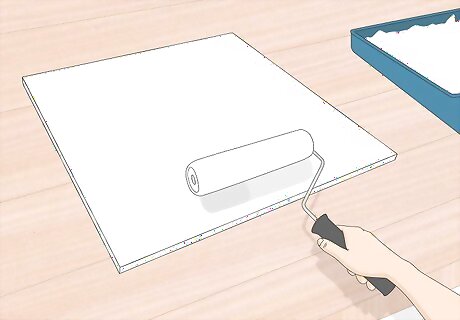
Let the primer dry and apply a second coat. Allow the coat to dry, following the instructions on the primer. Different kinds of primer will take different amounts of time to dry, so check the instructions on your can of primer to figure out how long you need to let it sit. Then paint on the second coat just as you did the first one. Let the primer dry again.
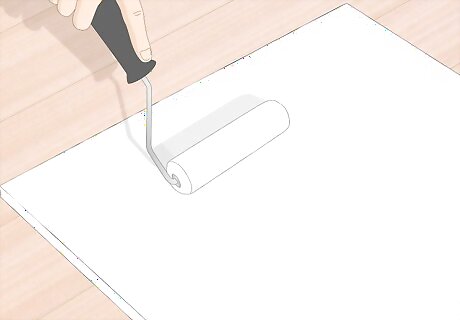
Paint 3 coats of primer on the back (rough) side. You need to prime the back of your board as well, even though you won’t be painting it. This helps keep your artwork waterproof, since the barn quilt will have to withstand the weather outdoors. Be patient and wait for the primer to dry in between each coat. It will help your quilt last much longer.
Blocking Your Pattern
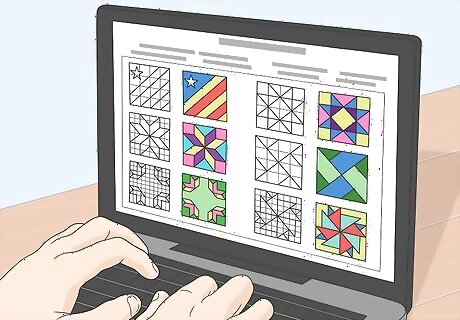
Choose a simple quilt square pattern by looking at books or online. Search online for inspiration for barn quilt designs or fabric quilt designs. A quilt square with a simple geometric design made out of straight lines will be the easiest to paint on your barn quilt. You can also create your own simple design. Bright, high-contrast designs look best on barn quilts. The fewer colors you use, the quicker you’ll be able to paint the quilt. You might want to start with a simple, 3-color design.
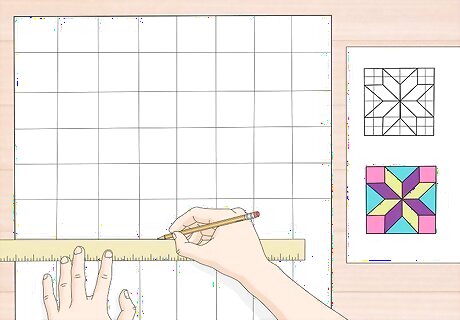
Sketch a grid onto your plywood with the same number of squares as the quilt block. Quilt blocks are usually 3x3 or 4x4 grids. Use a measuring tape and a straightedge to draw the right size grid onto your plywood. One way to make sure that your gridlines are at right angles is to use a piece of printer paper to check the corner. An easy way to find the center of your board is to draw 2 diagonal lines across connecting the corners. The point where the lines cross is the center.
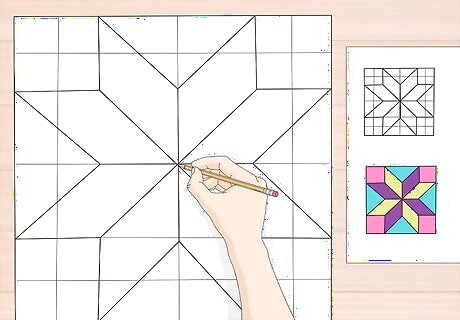
Transfer your design onto the board in pencil. Match up lines on the quilt block with the grid squares on your plywood to help you enlarge the pattern. Use a ruler or another form of straightedge to help you draw straight lines. Step back from the board every now and then to check that you’re transferring the pattern correctly. It’s easy to get caught up in the details and not realize you’re off by a whole row.
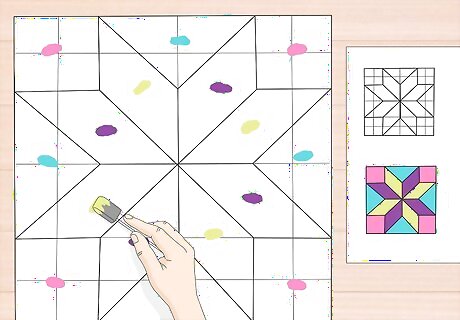
Label each section with its color. To label, you can write the paint color in pencil or use a colored post-it to designate which color paint goes where. You can even put a little dab of paint of the right color in the section. This will really help you out when you are applying the paint, because it’s easy to get confused.
Taping and Painting the Wood
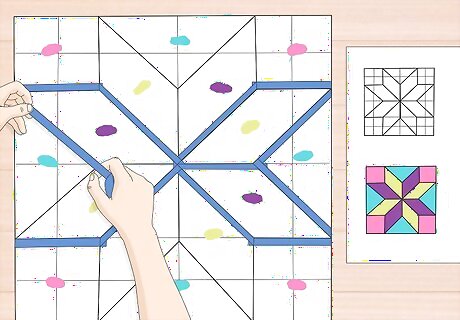
Put painters tape around the sections for your lightest color. Apply painters tape in a straight line along each edge of the sections where you will paint your lightest color. The inner edge of the painter’s tape should be lined up with the pencil outline of that color. Painters tape will easily peel off once you’re done with it. It’s best to start with your lightest color and work your way up to the darker colors. The tape helps you paint smooth, straight lines. Make sure the tape is tightly attached to the plywood.

Cut corners and points in the tape with a razor. If you have 2 overlapping pieces of painters tape at a corner, you can cut them away to make a sharp point. Line up your straight edge where you want to make the cut and cut the tape with a razor blade or x-acto knife. Then, peel off the bit of tape you sliced to reveal a sharp corner. Be very careful with the blade. If you are a kid, get an adult to help with this step.

Paint 2 coats of paint in the taped off sections. Use an exterior latex paint. Paint inside the tape lines for all the sections that are in your first color. You can use a paintbrush, a paint roller, or even a makeup sponge to apply the paint. Paint right up to the tape line and a little bit on top of the tape. That way, you’ll have a crisp, full block of color. You don’t have to wait for your paint to totally dry before giving it a second coat– just leave it for a few minutes.
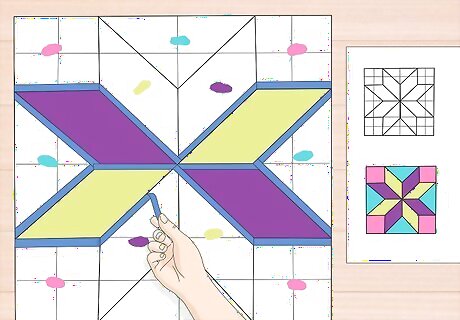
Peel off the tape immediately after applying the second coat. You should peel off the tape while the second coat of paint is still wet, so that it leaves behind a smooth line. Peel slowly and carefully to avoid smudging. Don’t worry if there are a few spots where the paint bled through the tape, because you will touch up those spots at the end. Remember to let the paint dry thoroughly before you put more tape down.
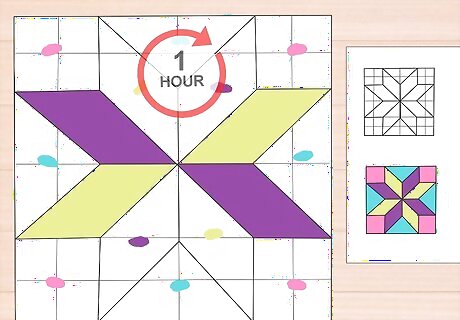
Let the first color dry completely. It may take about an hour or more for your paint to dry, so leave your barn quilt be and go do something else to keep yourself occupied. It’s really important to wait for the first color to dry completely, because if you tape over wet paint it will smudge. Tap the paint lightly with your finger to check if it’s dry. If you are in a humid place, it will take even longer for your paint to dry.
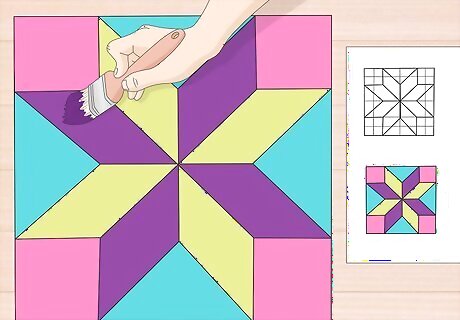
Continue taping and painting until you’ve finished the pattern. Remember to be patient and let each paint color dry thoroughly before moving onto the next color. Use a fresh paintbrush for each color. Remove the painters tape when you’ve done your last color and admire your work.

Touch up mistakes with an artist’s paintbrush. There will probably be a few small spots where one color accidentally bled over onto the other color. Using a small artist’s paintbrush, cover up the mistakes with a little bit of the correct color. Putting your pinky down helps keep your hand steady as you paint. If you don’t trust your freehanding skills, you can also put a bit of painters tape down on the line you want to fix.















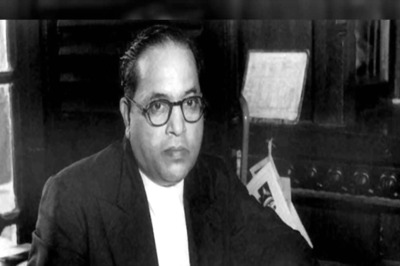




Comments
0 comment